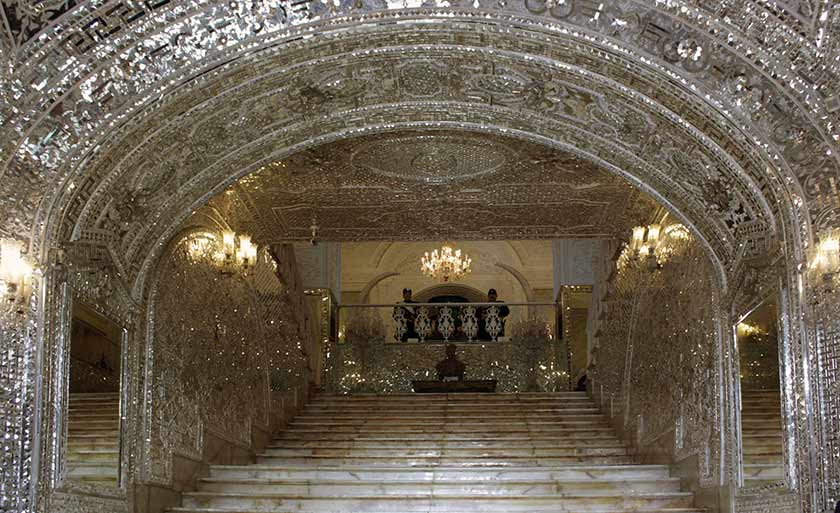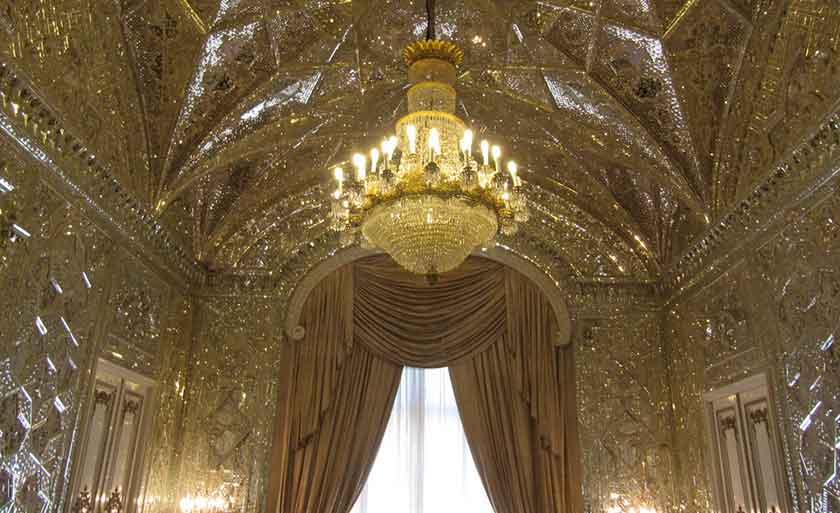Mirror Works
One of the art works related to the architectural designs used in religious sites, sacred, palaces and homes is mirror works. The art of making regular shapes in various geometric and non-geometric patterns and designs using small or large mirrors, as a means to decorate the surfaces of these structures, is called mirror works. The result of the art of mirror work is a shining and glittering surface made by the continuous reflection of light in countless pieces of mirror. This dynamic art on the body of walls and chalk ceiling adds ever increasing beauty and credibility to the structure. Mirror works was started in the Safavid era by adding large whole piece mirrors on the body of the structure as well as the walls of pillared porches. In the beginning, mirror works of structures in Iran were done as a decorative art in palaces and courthouses by artists. Courthouse of Shah Tahmasb in Ghazvin, Mirror Palace of Shah Safi and Chehel Sotun palace in Isfahan were some of the first structures embellished by mirrors.
In Chehel Sotun palace in addition to vertical mirrors, smaller pieces of mirror were used to decorate the ceiling, the body of the porches and the hall. Ayine Khaneh Palace is famous because of the heavy use of mirrors in its decoration. This art was in the height of its beauty. It became especially wide spread and prosperous in Qajar era. The artists in this era created unparalleled art works and the mirror works became a decoration art related to architecture in many religious and governing structures. The most prosperous known designs in mirror works are Gereh patterns and Rasmi-Bandi because the methods mentioned, in terms of variety and shapes, have wide spread use in most branches of Iranian art and by combining regular geometric patterns Gereh is created. The Iranian Master artists believe that inside every Gereh another Gereh has been illustrated. The patterns used in the mirror works include geometric patterns (Chahar lengeh, Shesh lengeh, Gereh Hasht Chahar lengeh and…) and plant patterns (Arabesque and Khatai). In this art, in addition to the combination of different pieces of mirror in the shape of Gereh and traditional patterns, we also come across integration techniques of mirror and chalk or paintings on the mirrors. In traditional mirror works, in old times in order to stick the mirror pieces, they would use Sirish, grape or date sap and egg white but nowadays wood glue is used instead.






Leave a Reply
Want to join the discussion?Feel free to contribute!